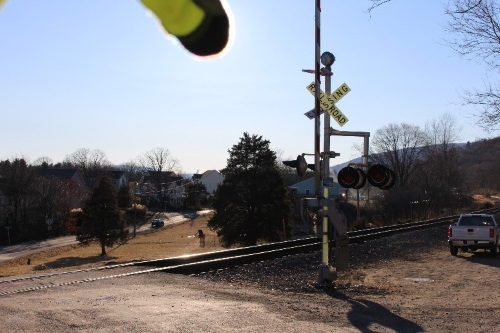The Federal Railroad Administration recently published two final rules – the first one regarding highway-rail grade crossing action plans, with the second one extending the amount of time freight rail equipment can be parked with air brake systems depressurized before a new brake inspection is required.
[Above photo by the NTSB.]
The FRA highway-rail grade cross plan final rule requires 40 states and the District of Columbia to develop and implement such plans to improve public safety.

It also requires 10 states that have already developed grade crossing action plans, as required by the Rail Safety Improvement Act of 2008 to update their current highway-rail crossing plans and submit reports describing the actions they have taken to implement them.
Furthermore, each action plan must identify specific strategies for improving safety at crossings, including crossing closures or re-aligning roadways over or under railways.

“Grade crossing accidents and incidents are the second leading cause of rail-related deaths in the United States, but nearly every one of them is preventable,” explained Ronald Batory, FRA administrator, in a statement. “The action plans give states a tool to engage with federal and local partners, railroads, and rail safety advocates to identify high risk crossings and develop strategies to save lives.”
Meanwhile, FRA’s final rule regarding brake system inspections incorporates “longstanding waivers” for such inspections, including related tests and equipment, while clarifying existing regulations and removing outdated provisions.
Those revisions “contemporize” freight rail brake system safety requirements by “incorporating safer and newer technology” while reducing unnecessary costs and increasing consistency between U.S. and Canadian regulations.

“Incorporating technologies and safety practices, this final rule improves freight rail efficiency and will make our freight rail system competitive for the future,” FRA’s Batory explained in a separate statement. However, the agency said it would still require a Class III brake inspection when adding freight cars to trains.
“Issuing waivers permitting railroads to test these practices gave us an opportunity to verify the safety benefits,” he added. “Modernization no longer has to happen by waiver; it’s permanent, and the economic impact to freight rail couldn’t come at a more pressing time.”
With this change, FRA estimates the industry will perform 110,000 fewer Class I brake inspections annually, with the industry potentially saving $500 million over the next decade as a result.
 Nation
Nation


